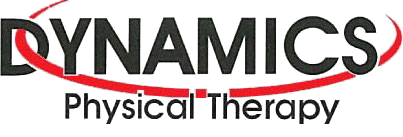Physical therapy in Northern Virginia for Golf
This resource is here to help clients achieve their golfing goals - from the golf beginner to the experienced golf player. We recommend a few general considerations for selecting golf equipment in order to stay comfortable and alert on the golf course. When comfort and alertness are maintained you will stand a good chance of remaining injury free.
If you are just beginning your association with golf, then second-hand or borrowed gear is a good choice. This allows you to try out gear for comfort before making any purchase commitments. New or old, the trick is selecting equipment that is the right fit for you depending on your body size and shape and your golfing skills.
Shoes
Your selection of shoes will depend on your budget, how often you play golf, your golf performance expectations and the environment you play in. These factors will influence your choice of shoe materials, brand, and the presence and type of spikes or dimples.
Regardless of all that, your most important consideration should be shoe fit and comfort.
You are going to be standing, walking and swinging in these shoes for hours. It is essential to try shoes on, so don't buy your shoes online. Have a professional help you find shoes that fit you firmly, particularly at the middle of the foot, without being too tight. If your shoe is too loose, your foot may slide within the shoe during your swing, giving you an unstable base. If you have one foot larger than your other, fit your shoes for the larger foot, and add an insole to the smaller foot as required. Try shoes on later in the day or after some activity when feet may have swollen a little, and wear the type of socks you plan to wear on the golf course. You should allow 1.3cm (half an inch) between the end of your big toe and the end of the shoe.
Clubs
Club selection should be made with the assistance of a golf professional to ensure the correct grip size, club length and weight. There are so many factors involved in proper club selection - shaft weight, material, and type of club head that you should seek a professional golf fitter to match the club characteristics to your playing level and health status. The set of clubs that were a good fit when you were age 25 may no longer be right for you at age 65 due to swing speed, frequency of play, grip strength or other health factors. Events like shoulder surgery or total hip replacements may also influence the type of shaft material and club length you need to keep you playing smoothly.
Golf bag and cart
If you are going to be carrying your golf bag any distance, carry your bag on both shoulders.
If your golf bag has only one strap, then alternate carrying the bag between shoulders. Golf carts that can be pushed are better than those that must be pulled. (Pulling carts invariably involves twisting the spine while exerting force, a risk for back injuries.) Choose a golf bag that can accommodate plenty of water bottles or fluid receptacles so as to not allude to the 19th hole type of drinks, and your sunscreen.
Apparel and sun protection
There are three factors to consider when selecting golf apparel: dress codes, sun protection and comfort. Long sleeved shirts made from breathable SPF 30 sun protection material are ideal. Don't forget to include a hat, sunglasses, sunscreen, and lip balm in your standard golf kit.
Hydration
On average you will walk 8 km while playing 18 holes of golf. The fluid loss from your body will depend on your body weight and the environmental conditions. If you don't replace that fluid and electrolytes you are likely to suffer from dehydration.
Adequate hydration before, during and after you golf will help:
- delay fatigue
- improve endurance
- prevent muscle cramps
- improve concentration
- assist recovery


